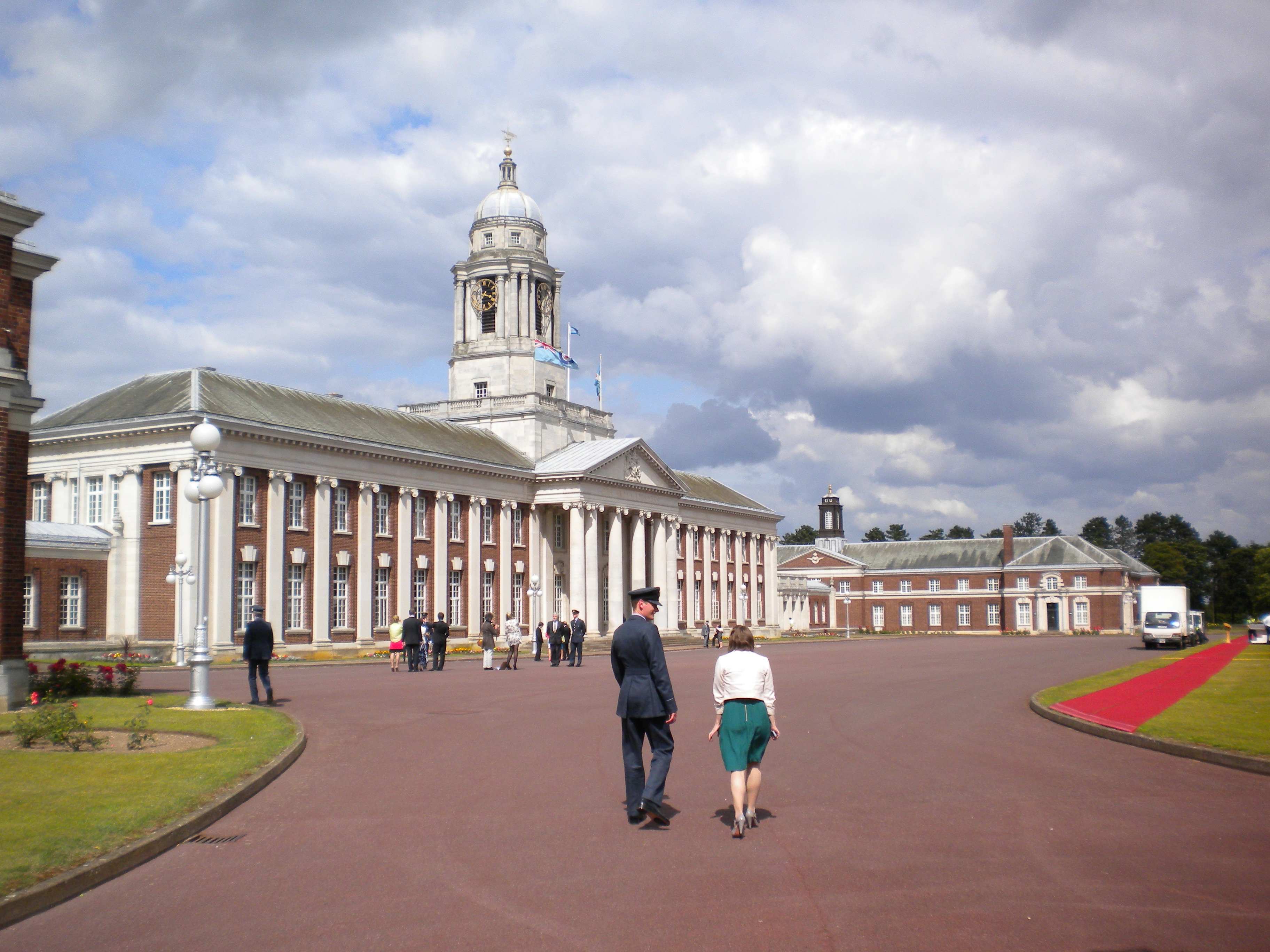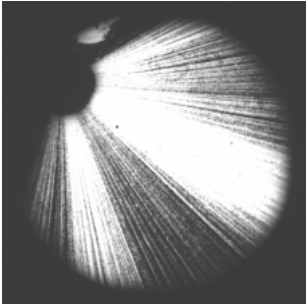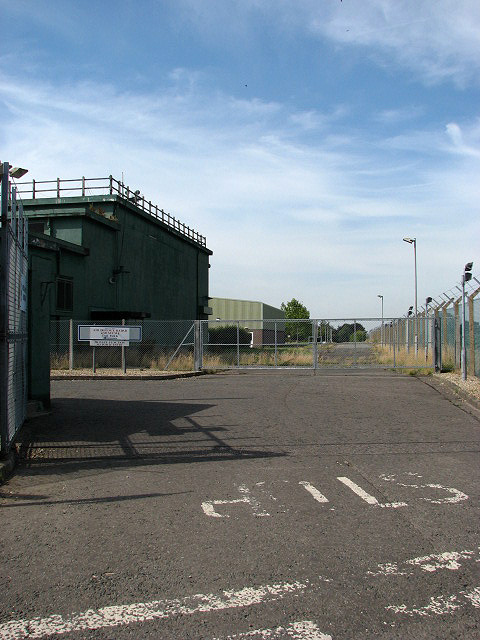|
RAF Neatishead
Remote Radar Head Neatishead ( ) or RRH Neatishead is an air defence radar station operated by the Royal Air Force. It is located approximately north east of Norwich in Norfolk, England. It was established during the Second World War and consists of the main technical site, and a number of remote, and sometimes unmanned sites. History The site was previously known as RAF Neatishead and its primary function was as a "Control and Reporting Centre" (CRC) for the south of the United Kingdom. Equipment previously located in the base included: Type 7 GCI, AN/FPS-6 height finding radar, Type 80 "Green Garlic" radar, Type 84 radar, Type 85 "Blue Yeoman" radar, 3 Decca (later Plessey) HF200 height finding radars, and a R15 radar. On 16 February 1966 a fire broke out in the bunker, station fire teams were unsuccessful in putting the fire out and so civilian fire crews were called. Three civilian firefighters died and the fire burned for nine days before it was fully extinguished. ... [...More Info...] [...Related Items...] OR: [Wikipedia] [Google] [Baidu] |
Norwich
Norwich () is a cathedral city and district of Norfolk, England, of which it is the county town. Norwich is by the River Wensum, about north-east of London, north of Ipswich and east of Peterborough. As the seat of the See of Norwich, with one of the country's largest medieval cathedrals, it is the largest settlement and has the largest urban area in East Anglia. The population of the Norwich City Council local authority area was estimated to be 144,000 in 2021, which was an increase from 143,135 in 2019. The wider built-up area had a population of 213,166 in 2019. Heritage and status Norwich claims to be the most complete medieval city in the United Kingdom. It includes cobbled streets such as Elm Hill, Timber Hill and Tombland; ancient buildings such as St Andrew's Hall; half-timbered houses such as Dragon Hall, The Guildhall and Strangers' Hall; the Art Nouveau of the 1899 Royal Arcade; many medieval lanes; and the winding River Wensum that flows through the city ... [...More Info...] [...Related Items...] OR: [Wikipedia] [Google] [Baidu] |
RAF Wattisham
Royal Air Force Station Wattisham or more simply RAF Wattisham is a former Royal Air Force station located in East Anglia just outside the village of Wattisham, south of Stowmarket in Suffolk, England. During the Cold War it was a major front-line air force base, operating Quick Reaction Alert (South), before closing in 1993 and is now operated by the British Army as Wattisham Airfield. History Royal Air Force use RAF Wattisham opened on 5 April 1939 as a medium bomber station, the squadrons there being equipped with Bristol Blenheim bombers. Part of No. 2 Group, No. 107 Squadron and No. 110 Squadron were stationed there on the outbreak of war as No. 83 Wing. On 4 September 1939, just 29 hours after the declaration of war, bombers from Wattisham took off on the first attack of the war, against enemy shipping in Wilhelmshaven harbour. In September 1942, the base was handed over to the United States Army Air Forces. United States Army Air Forces use Wattisham was assigne ... [...More Info...] [...Related Items...] OR: [Wikipedia] [Google] [Baidu] |
NATO Integrated Air Defense System
The NATO Integrated Air Defense System (short: NATINADS) is a command and control network combining radars and other facilities spread throughout the NATO alliance's air defence forces. It formed in the mid-1950s and became operational in 1962 as NADGE. It has been constantly upgraded since its formation, notably with the integration of Airborne Early Warning aircraft in the 1970s. The United Kingdom maintained its own network, but was fully integrated with the network since the introduction of the Linesman/Mediator network in the 1970s. Similarly, the German network maintained an independent nature through GEADGE. Development Development was approved by the NATO Military Committee in December 1955. The system was to be based on four air defense regions (ADRs) coordinated by SACEUR (Supreme Allied Commander Europe). Starting from 1956 early warning coverage was extended across Western Europe using 18 radar stations. This part of the system was completed by 1962. Linked to existin ... [...More Info...] [...Related Items...] OR: [Wikipedia] [Google] [Baidu] |
List Of Royal Air Force Stations
The Royal Air Force (RAF) operates several stations throughout the United Kingdom and overseas. This includes front-line and training air bases, support, administrative and training stations with no flying activity, unmanned airfields used for training, intelligence gathering stations and an early warning radar network. The list also includes RAF stations operated by the United States Visiting Forces, former RAF stations now operated by defence contractor QinetiQ on behalf the Ministry of Defence (MOD) and air weapons ranges operated by the MOD. Overseas, the RAF operates airfields at four Permanent Joint Operating Bases (PJOBs) which are located in British Overseas Territories. RAF stations and MOD airfields in the UK Royal Air Force RAF front-line operations are centred on seven main operating bases (MOBs): * RAF Coningsby, RAF Marham and RAF Lossiemouth (Air Combat) * RAF Waddington ( Combat Intelligence, Surveillance Target Acquisition and Reconnaissance) * RAF ... [...More Info...] [...Related Items...] OR: [Wikipedia] [Google] [Baidu] |
Linesman/Mediator
Linesman/Mediator was a dual-purpose civil and military radar network in the United Kingdom between the 1960s and 1984. The military side (Linesman) was replaced by the Improved United Kingdom Air Defence Ground Environment (IUKADGE), while the civilian side (Mediator) became the modern public-private National Air Traffic Services (NATS). In the 1950s, the Royal Air Force was installing a radar network known as ROTOR using war-era radars like Chain Home along with new command centres. A new radar, the AMES Type 80, replaced all of the ROTOR radars and command centres with a series of nine Master Control Radars and a number of associated secondary radars. While these installations were in progress in the early 1950s, Compagnie générale de la télégraphie sans fil, CSF introduced the carcinotron, which could output a radio signal at any desired frequency. This made it a very effective Radar jamming and deception, jamming system, and it appeared to render ground-based radars li ... [...More Info...] [...Related Items...] OR: [Wikipedia] [Google] [Baidu] |
Improved United Kingdom Air Defence Ground Environment
The Improved United Kingdom Air Defence Ground Environment, normally shortened to either UKADGE or IUKADGE, was the Royal Air Force's (RAF) ground-controlled interception system covering the British Isles during the 1990s. It consisted of a number of ground-based radar sites, links to airborne early warning aircraft and Royal Navy ships, a telecommunications system to send digital data and voice communications on a protected network, and processing systems based on VAX-11/780 computers. The network ultimately contained a dozen long-range radars including four Marconi Martello, two General Electric TPS-592, and six Plessey AR-320. UKADGE was developed in response to concerns about its predecessor, Linesman/Mediator. Linesman started in the 1950s, when it was assumed that any air attack on the UK would be by hydrogen bomb so no effort was made to "harden" the radars or its main control centre as such effort would be futile. By the mid-1960s, with the Soviet Union reaching strategic ... [...More Info...] [...Related Items...] OR: [Wikipedia] [Google] [Baidu] |
Heraldic Badges Of The Royal Air Force
Heraldic badges of the Royal Air Force are the insignia of certain commands, squadrons, units, wings, groups, branches and stations within the Royal Air Force. They are also commonly known as crests, especially by serving members of the Royal Air Force, but officially they are badges. Each badge must be approved by the reigning monarch of the time, and as such will either have a Tudor Crown (heraldry), King's or St Edward's Crown, Queen's Crown upon the top of the badge, dependent upon which monarch granted approval and the disbandment date of the unit.Most units/squadrons and bases had their badges updated to the Queen's Crown sometime after her accession, (although in some cases many years elapsed before the badge was updated). Most of the flying units were disbanded after the Second World War, so their badges retained the King's Crown. Queen Elizabeth II promulgated an order in October 1954 detailing that all current badges in use, and from that date on, were to use the Queen's ... [...More Info...] [...Related Items...] OR: [Wikipedia] [Google] [Baidu] |
Motto
A motto (derived from the Latin , 'mutter', by way of Italian , 'word' or 'sentence') is a sentence or phrase expressing a belief or purpose, or the general motivation or intention of an individual, family, social group, or organisation. Mottos (or mottoes) are usually found predominantly in written form (unlike slogans, which may also be expressed orally), and may stem from long traditions of social foundations, or from significant events, such as a civil war or a revolution. A motto may be in any language, but Latin has been widely used, especially in the Western world. Heraldry In heraldry, a motto is often found below the shield in a banderole; this placement stems from the Middle Ages, in which the vast majority of nobles possessed a coat of arms complete with a motto. In the case of Scottish heraldry, it is mandated to appear above the crest. Spanish coats of arms may display a motto in the bordure of the shield. In heraldic literature, the terms 'rallying cry' res ... [...More Info...] [...Related Items...] OR: [Wikipedia] [Google] [Baidu] |
Charity Commission Of England And Wales
, type = Non-ministerial government department , seal = , seal_caption = , logo = Charity Commission for England and Wales logo.svg , logo_caption = , formed = , preceding1 = , dissolved = , jurisdiction = England and Wales , headquarters = Petty France, London , region_code = GB , coordinates = , employees = 420 , budget = £22.9 million (2016–2017) , minister1_name = Michelle Donelan , minister1_pfo = , chief1_name Orlando Fraser QC, chief1_position = Chair , chief2_name Helen Stephenson CBE, chief2_position = Chief Executive , chief3_name = , chief3_position = , chief4_name = , chief4_position = , chief5_name = , chief5_position = , chief6_name = , chief6_position = , chief7_name = , chief7_position = , chief8_name = , chief8_position = , chief9_name = , chief9_position = , parent_department = ... [...More Info...] [...Related Items...] OR: [Wikipedia] [Google] [Baidu] |
RAF Air Defence Radar Museum
The Royal Air Force Air Defence Radar Museum is a museum on the site of the former Royal Air Force radar and control base RAF Neatishead, close to the village of Horning in Norfolk, England. The museum's exhibitions cover the history of air defence in the United Kingdom, in particular the development of radar from the 1930s until the end of the Cold War. The museum includes a complete Cold War-era Operations Room from which the air defence of Britain was conducted for several decades, as well as many examples of original radar and communications equipment, and an exhibit of a Royal Observer Corps Nuclear Reporting Post. There is also a gallery devoted to the history of the nearby RAF Coltishall. The Museum is largely staffed by volunteers, many of whom served previously in the RAF. The Museum is a registered charity, number 1058887. [...More Info...] [...Related Items...] OR: [Wikipedia] [Google] [Baidu] |
NATO
The North Atlantic Treaty Organization (NATO, ; french: Organisation du traité de l'Atlantique nord, ), also called the North Atlantic Alliance, is an intergovernmental military alliance between 30 member states – 28 European and two North American. Established in the aftermath of World War II, the organization implemented the North Atlantic Treaty, signed in Washington, D.C., on 4 April 1949. NATO is a collective security system: its independent member states agree to defend each other against attacks by third parties. During the Cold War, NATO operated as a check on the perceived threat posed by the Soviet Union. The alliance remained in place after the dissolution of the Soviet Union and has been involved in military operations in the Balkans, the Middle East, South Asia, and Africa. The organization's motto is ''animus in consulendo liber'' (Latin for "a mind unfettered in deliberation"). NATO's main headquarters are located in Brussels, Belgium, while NATO ... [...More Info...] [...Related Items...] OR: [Wikipedia] [Google] [Baidu] |
Air Defence
Anti-aircraft warfare, counter-air or air defence forces is the battlespace response to aerial warfare, defined by NATO as "all measures designed to nullify or reduce the effectiveness of hostile air action".AAP-6 It includes surface based, subsurface ( submarine launched), and air-based weapon systems, associated sensor systems, command and control arrangements, and passive measures (e.g. barrage balloons). It may be used to protect naval, ground, and air forces in any location. However, for most countries, the main effort has tended to be homeland defence. NATO refers to airborne air defence as counter-air and naval air defence as anti-aircraft warfare. Missile defence is an extension of air defence, as are initiatives to adapt air defence to the task of intercepting any projectile in flight. In some countries, such as Britain and Germany during the Second World War, the Soviet Union, and modern NATO and the United States, ground-based air defence and air defence aircraf ... [...More Info...] [...Related Items...] OR: [Wikipedia] [Google] [Baidu] |







